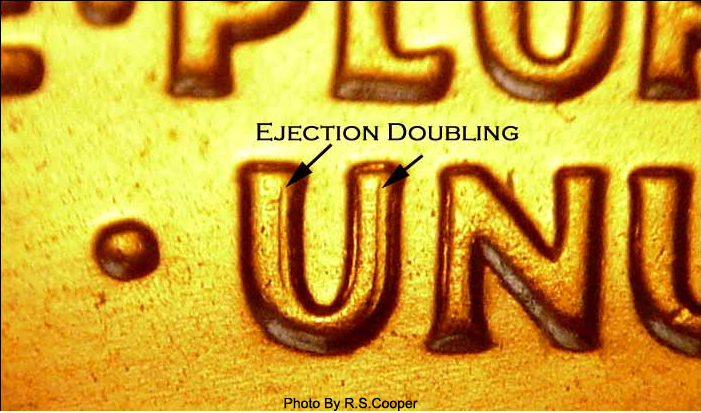
Other Types of Doubling
Grease Mold Doubling/Filled Die Doubling
Associated with filled die errors, grease mold doubling or filled die doubling occurs when the grease or other die fill material comes loose from a recessed part of the die and migrates to the flat field area, where it gets impressed into the remaining gunk that is on the die, forming a secondary image of the device that is raised on the coin's surface. So far this type of doubling has only been found on cents from the mid to late 1990's.
To see more photos of this error click here
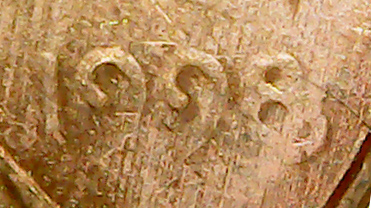
Photo By Amos811
Mechanical Doubling
Many an excited collector has found the notorious machine doubled Lincoln cent and confused it with a true doubled die. To a seasoned collector, spotting the difference is easy. The machine doubling produces a flat, shelf like secondary image that is easily distinguished from the rounded, raised doubling produced by a doubled die. Cents before 1990 had the mint mark punched in by hand after the die was made, so a true doubled die before 1990 wouldn't show the same doubling on the mint mark. It is possible to have a doubled die that also shows machine doubling, the the doubled die part will still not show on the mint mark.
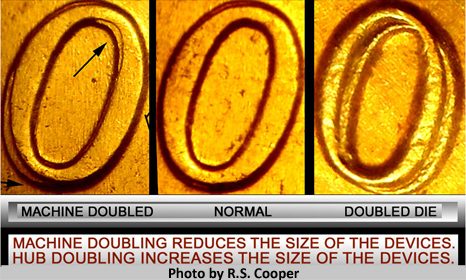
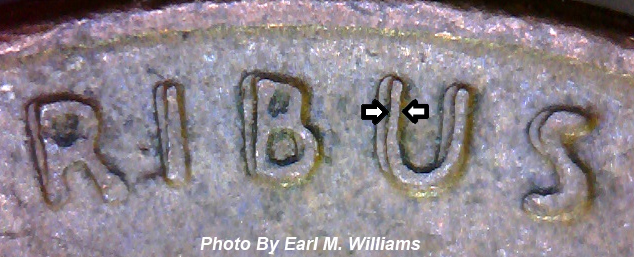
On the reverse side of this 1953-D shown above, notice how the original devices are narrowed by the mechanical doubling. The secondary image is flat. not raised and rounded like the original.
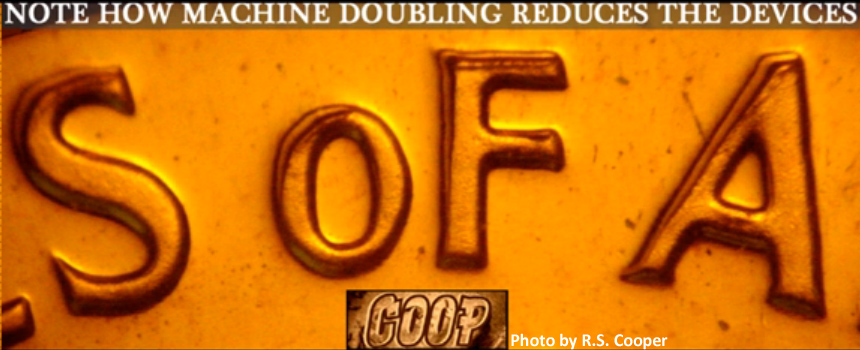
This 1970-S is a good example of the machine doubling. Notice how the date is clearly doubled but so is the mint mark? Also take notice of the flat, shelf like appearance of the secondary image.
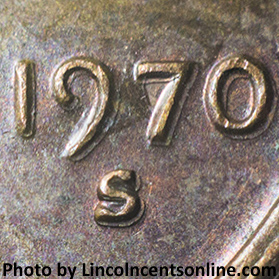
Coins with this type of doubling have held little collector value over the years, but in recent times, they seem to be in small demand on some auction sites such as ebay. They can bring anywhere from $1.00 and up. This may be due to the fact that many beginner coin collectors cannot tell the difference between this type of doubling and a true doubled die error.
1969-S cents like the one shown below, always raise the eyebrows of new collectors because of the rare 1969-S doubled die. 1969 seemed to be a banner year for doubling of this type. Although it's not rare at all, some novice collectors will still pay a very small premium for them.
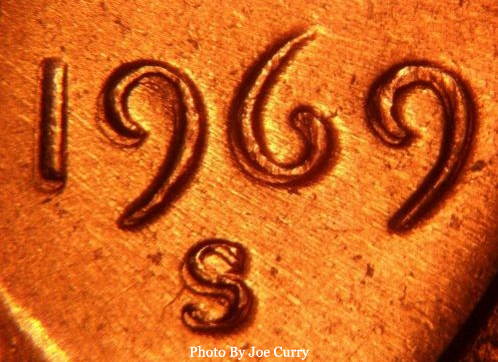
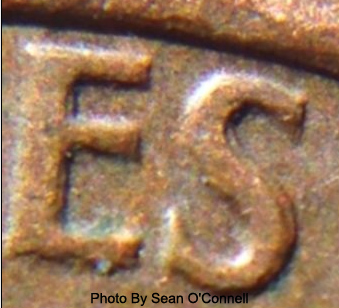
1959-D
This 1959-D is a excellent example of the flat, shelf like secondary image.
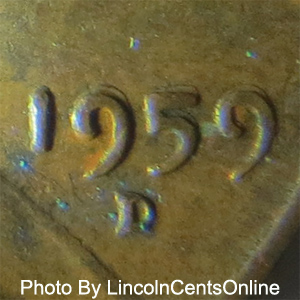
Another 1959-D
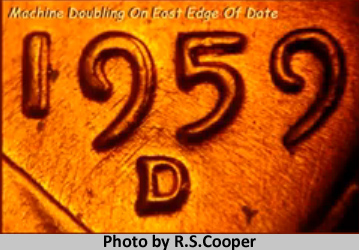
1944-S The mint mark is doubled the same as the date
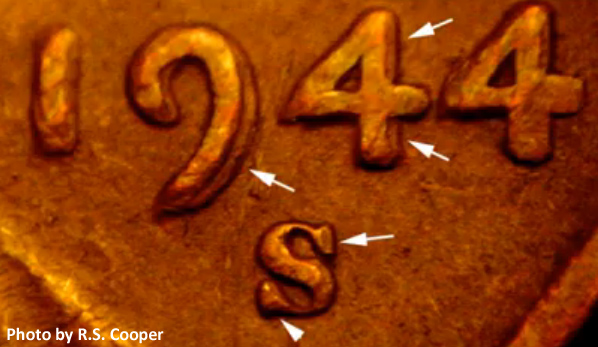
Machine doubling can occur anywhere on the coin.
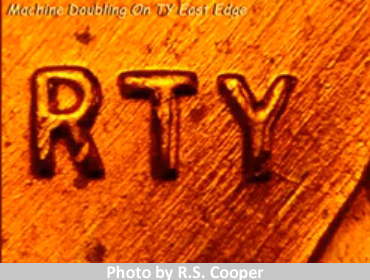
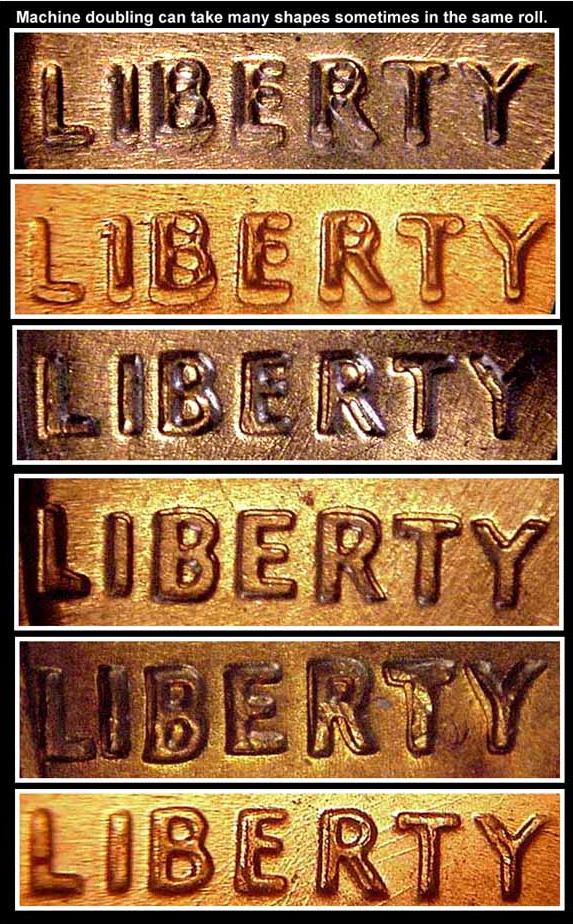
Photo by R.S.Cooper
Split Plate Doubling
Split plate doubling usually occurs on the side of the devices facing the rim. It is most commonly found on the mint mark but it can affect any of the raised areas of the coins design.
It is caused by the thin Copper plating being stretched and torn as the coin is struck. Sometimes the edges of the die will catch on the plating, causing it to over stretch. It is commonly seen on Zinc cents and is almost always seen on Broadstruck Zinc cents, as the Copper on them gets stretched much farther.
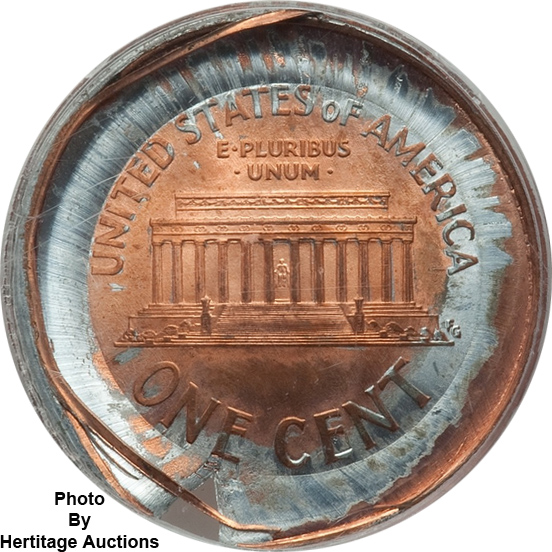
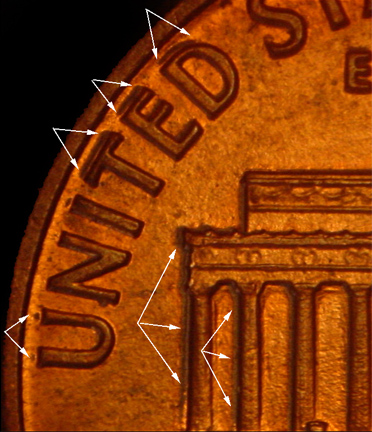
Photo By R.S.Cooper
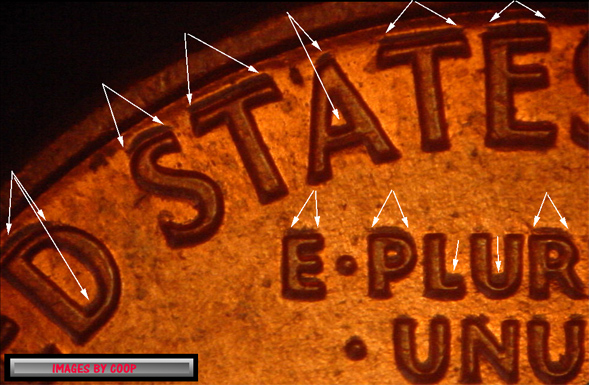
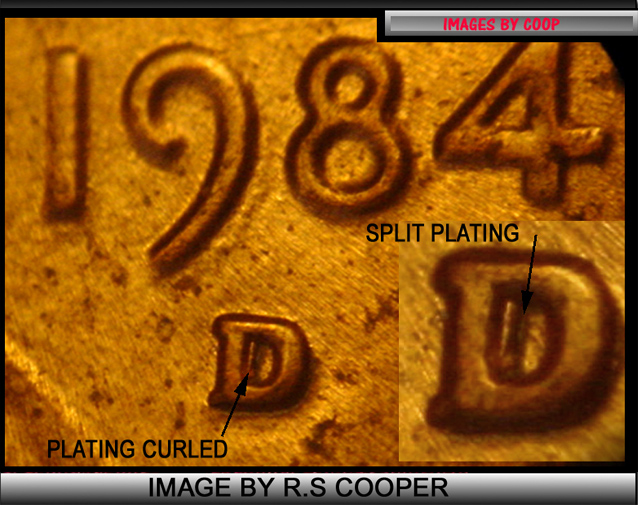
Die Deterioration Doubling
Die deterioration doubling is a very common type of doubling that adds no collector value to a coin. Many new collectors will confuse this type of doubling with the more sought after doubled die varieties. Die deterioration doubling, like a true doubled die, is on the die itself, and not an error in striking like the mechanical doubling is. Die deterioration doubling happens when dies are over used and the details begin to deteriorate. When the planchets are struck by the die, the metal flows much like a footprint in muddy soil. After a while, the dies will erode just like water or any other flowing material will erode the surface it flows over. As the die erodes it forms depressions in the die which will leave raised areas on the coin's surface. The doubling from deteriorated dies will have a much softer appearance than a doubled die, which has a sharp detailed secondary image.
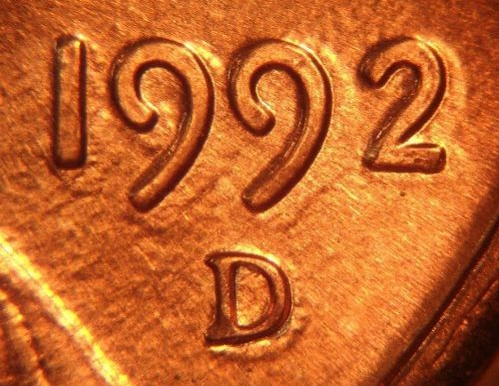
Photo By Joe Curry
Master Die Doubling
Master die doubling can be seen on a large percentage of 1972 cents from all three mints.
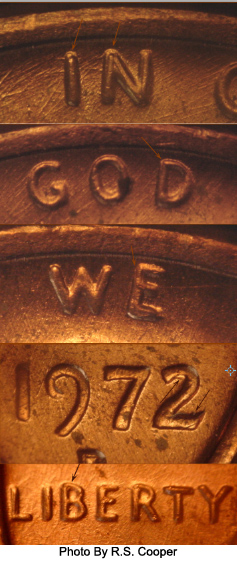
Die Wear
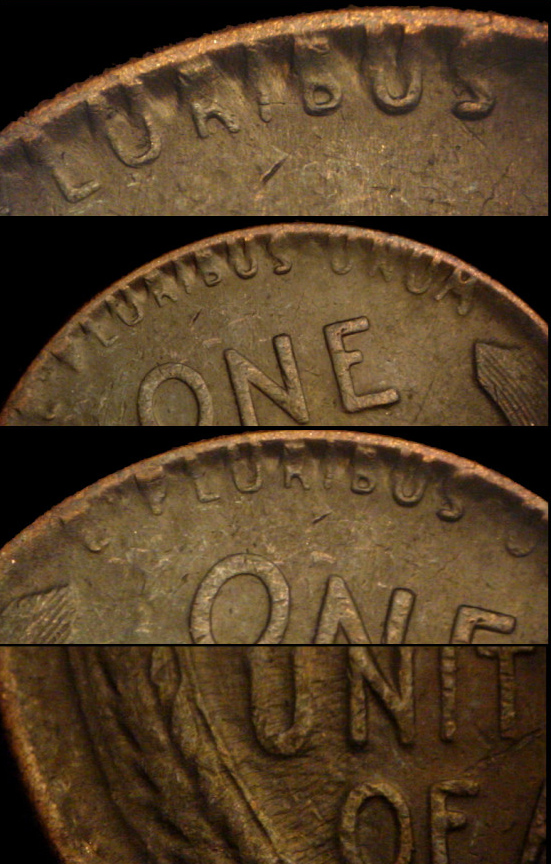
Photo By R.S.Cooper
Ejection Doubling
